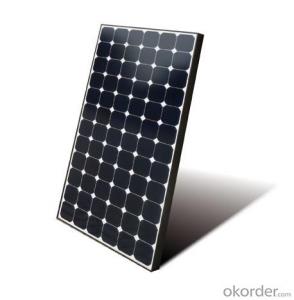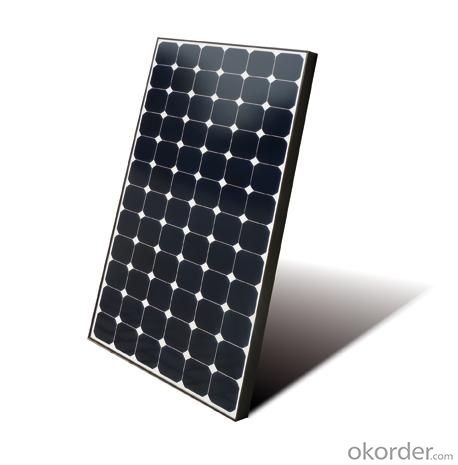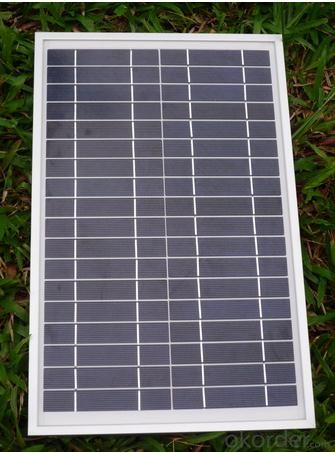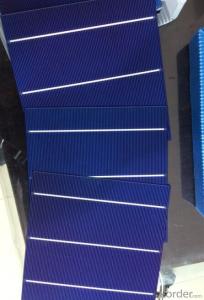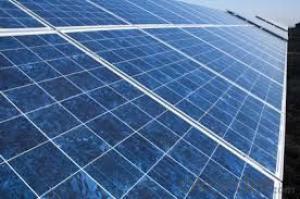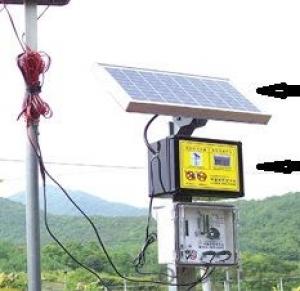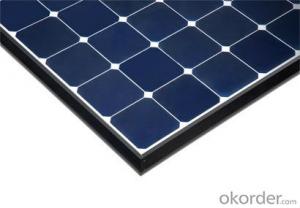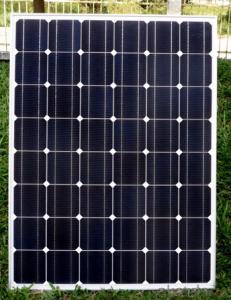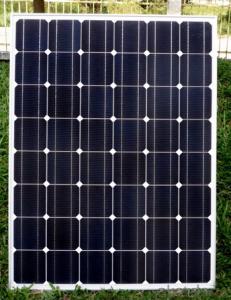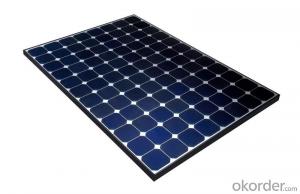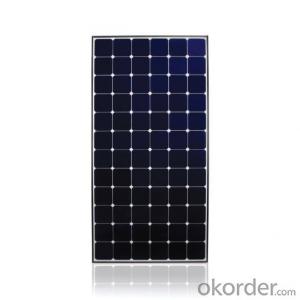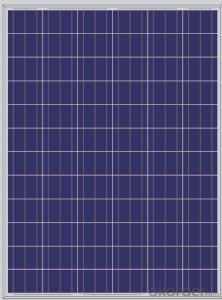A-Grade Poly Solar Panel 20W with 12 Years Warranty - Solar Materials and Solar Cells
- Loading Port:
- Shanghai
- Payment Terms:
- TT OR LC
- Min Order Qty:
- 100 watt
- Supply Capability:
- 1000 watt/month
OKorder Service Pledge
OKorder Financial Service
You Might Also Like
Specification
Poly Solar Panel 20W A Grade with 12 Years Warranty
Production description
Commercial concentrated solar power plants were first developed in the 1980s. The 392 MW Ivanpah installation is the largest concentrating solar power plant in the world, located in the Mojave Desert of California. The 579 MW Solar Star, nearRosamond, California, is the world's largest PV power station.Photovoltaics were initially solely used as a source of electricity for small and medium-sized applications, from the calculator powered by a single solar cell to remote homes powered by an off-grid rooftop PV system. As the cost of solar electricity has fallen, the number of grid-connected solar PV systems has grown into the millions and utility-scale solar power stations with hundreds of megawatts are being built. Solar PV is rapidly becoming an inexpensive, low-carbon technology to harness renewable energy from the Sun.
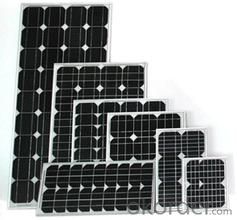
Application
Commercial
Industrial
Residential
Product Feature
12 years quality warranty 25 years performance output.
Free for less than 5 pcs sample requirement
Free to replace or repair or refund if products fail to conform to the PI requirement.
Packaging
28pcs into carton 2carton into pallets 28pallets into a 40ft container
Delivery
After 25 days for manufacturered goods as soon as we received full payment.
After 10 days for stock goods as soon as we received full payment.
- Q: Have you ever been to a solar cell power generation station?
- Of course, I've been there at least 3 times.
- Q: Can solar cells be used on curved surfaces?
- Yes, solar cells can be used on curved surfaces. Advances in technology have enabled the development of flexible and bendable solar panels that can conform to curved or irregular shapes, allowing for their installation on various surfaces such as rooftops, vehicles, and even clothing.
- Q: How do solar cells perform in extreme weather conditions?
- Solar cells can generally perform well in extreme weather conditions. However, extreme heat can cause a slight decrease in their efficiency, while extreme cold temperatures can reduce the power output temporarily. Additionally, severe weather events such as hailstorms or strong winds may damage the solar panels if they are not properly installed or protected. Nonetheless, solar cells are designed to withstand these conditions and continue to generate electricity, making them a reliable and sustainable energy source even in extreme weather.
- Q: Can solar cells be used in desert regions?
- Yes, solar cells can be used in desert regions. In fact, desert regions are ideal for solar energy generation due to their high levels of solar radiation and clear skies. The availability of ample sunlight and vast open spaces make deserts well-suited for large-scale solar power installations, such as solar farms or concentrated solar power plants. Additionally, the arid climate in deserts minimizes the risk of cloud cover or rain interfering with solar energy production.
- Q: Why are the poly Solar cell specifications is different from each other, they seem to have the different size of 125mm, 156mm, 152mm, is the 152mm's battery technology is higher than the other?
- We seldom see poly solar cell with the size of 152, because that is not really good to use.
- Q: How do solar cells perform in areas with high levels of snowfall?
- Solar cells typically do not perform optimally in areas with high levels of snowfall. The accumulation of snow on the surface of the cells can block sunlight and reduce their efficiency. However, advancements have been made to design solar panels with self-cleaning features or tilted angles that can help shed snow. Additionally, regular maintenance and clearing of snow can help ensure the continued performance of solar cells in such areas.
- Q: Can solar cells be used in agricultural irrigation systems?
- Yes, solar cells can be used in agricultural irrigation systems. Solar-powered irrigation systems can effectively harness the energy from the sun to power water pumps and provide a sustainable and cost-effective solution for irrigation needs in agricultural settings. This technology reduces dependence on traditional energy sources and helps conserve water resources while promoting environmentally friendly practices in agriculture.
- Q: Can solar cells be used in electric vehicle charging stations?
- Yes, solar cells can be used in electric vehicle charging stations. Solar panels can generate electricity from sunlight, which can then be used to charge electric vehicles. This provides a sustainable and renewable energy source for charging stations, reducing dependency on traditional power grids and reducing carbon emissions.
- Q: Can solar cells be used in weather monitoring systems?
- Yes, solar cells can be used in weather monitoring systems. Solar cells are used to convert sunlight into electrical energy, which can power various components of weather monitoring systems such as sensors, data loggers, and communication devices. This allows for autonomous and sustainable operation of weather monitoring systems in remote locations where access to traditional power sources may be limited.
- Q: Can solar cells be used in airports?
- Yes, solar cells can be used in airports. In fact, many airports around the world have already started using solar panels to generate clean and renewable energy. These solar cells are typically installed on rooftops, canopies, or open areas near the airport to harness sunlight and convert it into electricity. This helps airports reduce their carbon footprint, lower energy costs, and contribute towards sustainability goals.
Send your message to us
A-Grade Poly Solar Panel 20W with 12 Years Warranty - Solar Materials and Solar Cells
- Loading Port:
- Shanghai
- Payment Terms:
- TT OR LC
- Min Order Qty:
- 100 watt
- Supply Capability:
- 1000 watt/month
OKorder Service Pledge
OKorder Financial Service
Similar products
Hot products
Hot Searches
Related keywords
